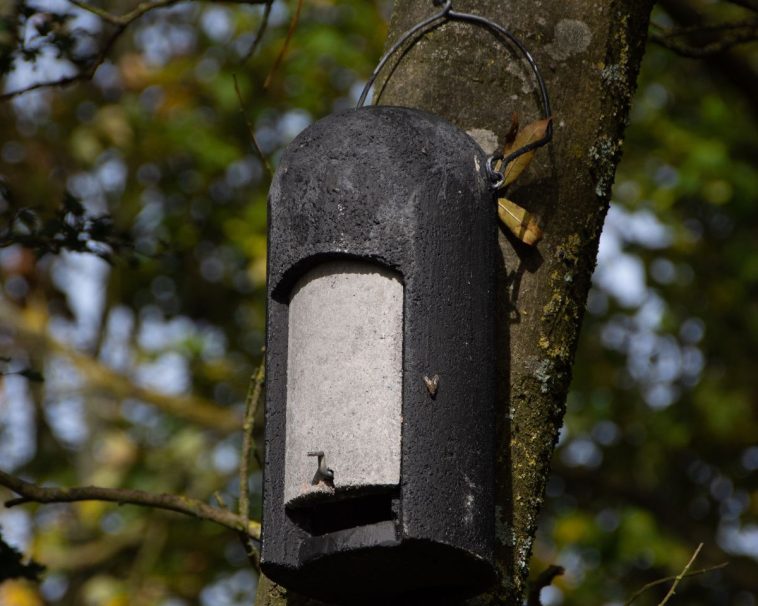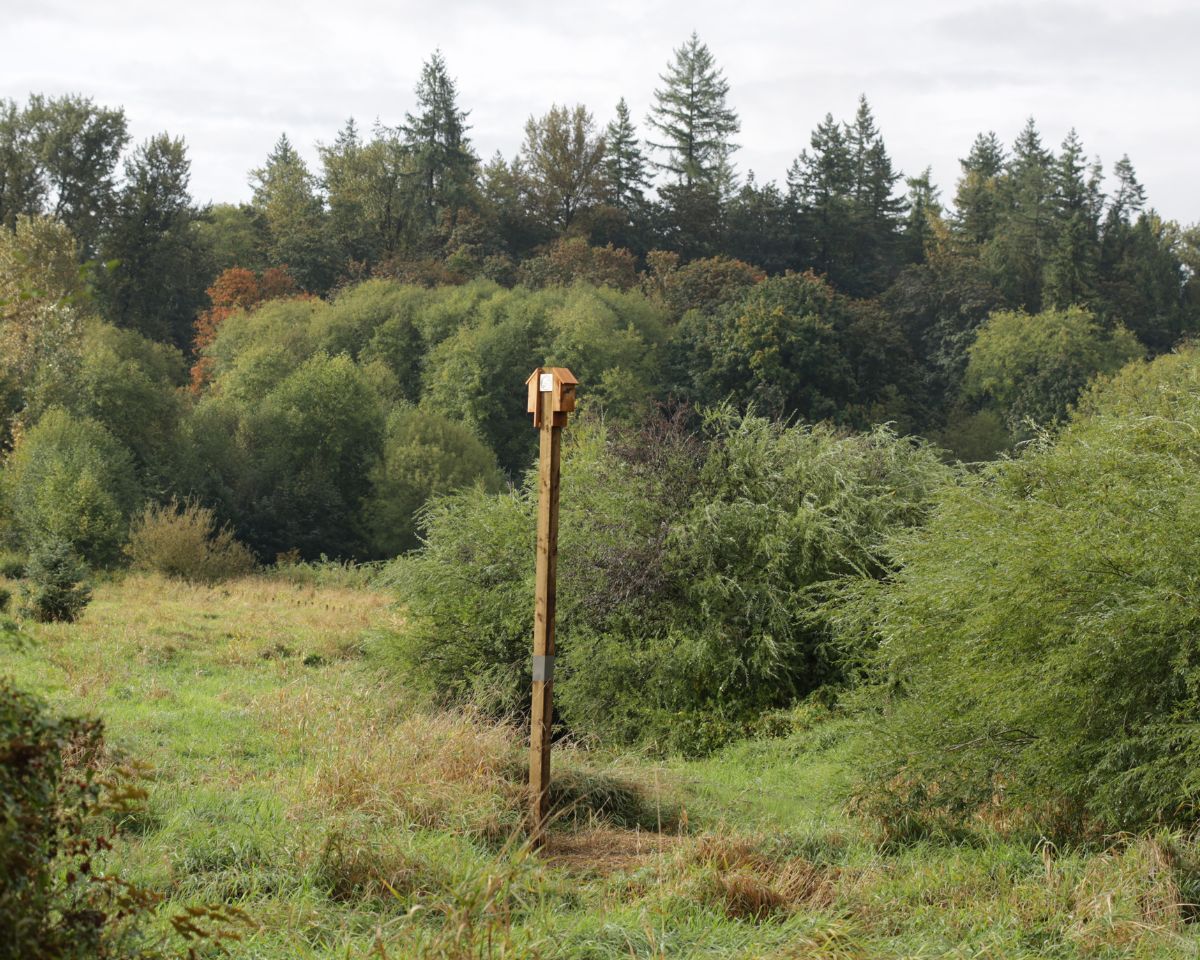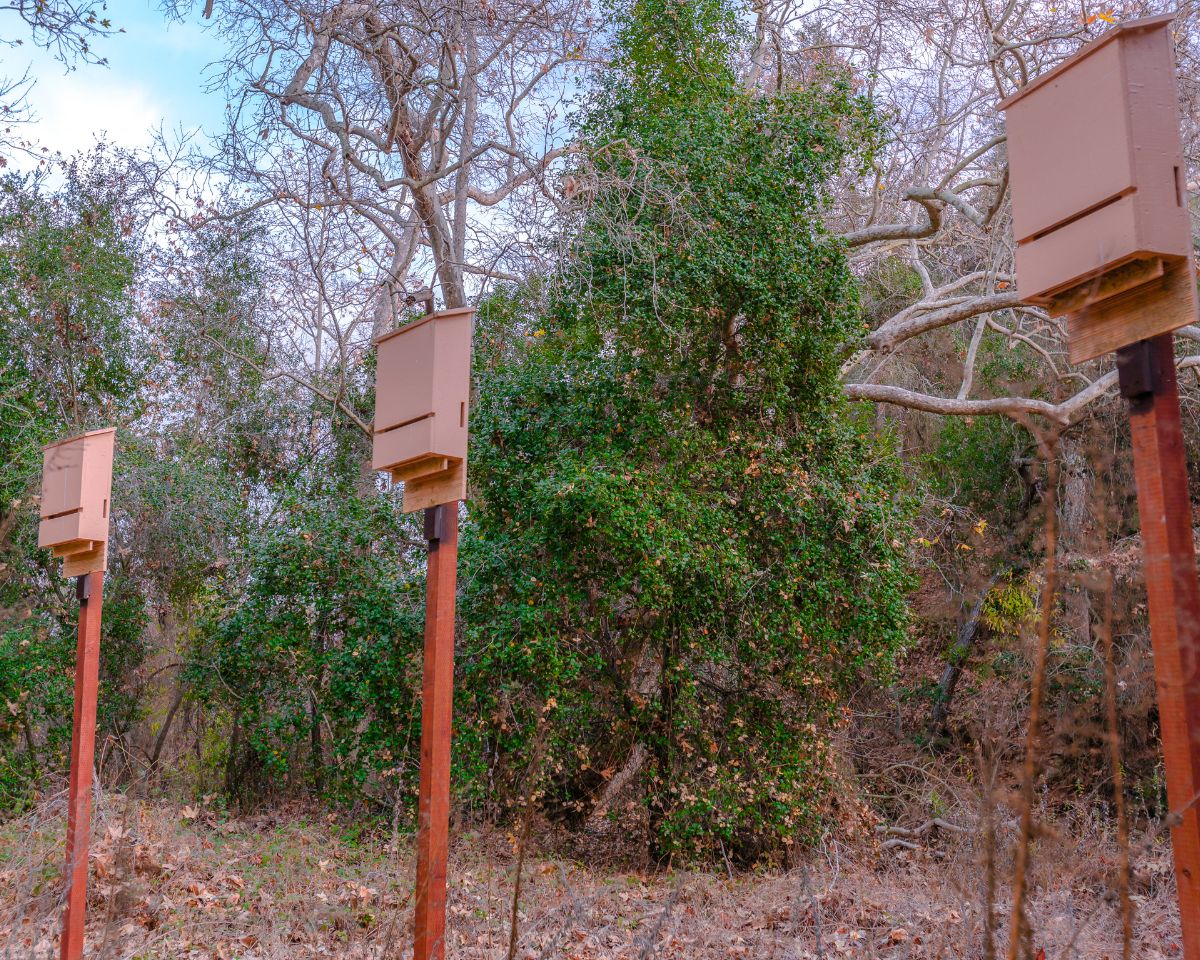Bat Boxes

Bat boxes are structures designed to provide a safe and secure habitat for bats to roost and breed in. These boxes are typically made of wood and are placed in areas where bats are known to frequent, such as near bodies of water or in wooded areas.
Different types of bat boxes exist, including single-chamber, multi-chamber, and rocket boxes. Each type has its own unique design and purpose, but all aim to provide a safe and comfortable habitat for bats to roost and raise their young.
The benefits of bat boxes can provide natural pest control and help maintain a healthy ecosystem. Bats are known to eat insects such as mosquitoes and agricultural pests, reducing the need for harmful pesticides. Additionally, providing a safe habitat for bats can also contribute to biodiversity and conservation efforts.
Building a bat box involves measuring and cutting wood, assembling the pieces, and installing it in a suitable location. Providing a safe and comfortable habitat for bats can help control insect populations and promote biodiversity in the local ecosystem.
Installing a bat box involves finding a suitable location and securing it to a tree or building. This can provide a safe and comfortable habitat for bats, which can help control insect populations and contribute to a healthier ecosystem.
Types of Bat Boxes
To provide a comfortable home for flying furry creatures, one can choose from various types of shelters that are designed to meet their unique requirements.
One option is the bat box, which comes in various shapes and sizes. Single-chamber boxes are suitable for smaller bat species, while multi-chamber boxes can accommodate larger ones. These wooden boxes have a narrow entrance at the bottom, allowing bats to enter. It’s crucial to place them in a location that receives ample sunlight, as bats require warmth for optimal survival.
Another option is the rocket box, designed to replicate natural bat habitats like tree hollows, caves, or rock crevices. These boxes, made of wood or concrete, come in various shapes and sizes. They can be installed on trees or buildings, providing an excellent habitat for bats.
When selecting a bat box, it’s important to consider the species in your area and the installation location. Different species have specific preferences, and the right choice will support their needs effectively.
Benefits of Bat Boxes

Bat boxes are a valuable addition to any garden, providing a safe and comfortable habitat for various bat species. These boxes contribute to conservation efforts and help increase bat populations, benefiting the ecosystem.
Bats serve as natural pest controllers, consuming large numbers of insects such as mosquitoes and moths. By installing a bat box, you reduce the need for harmful pesticides and insecticides.
Bats play a crucial role as pollinators, aiding in plant reproduction. By supporting bats through bat boxes, you not only protect these fascinating creatures but also contribute to the local environment.
Building a Bat Box
Building a bat box is a simple and effective way to support wildlife conservation. To get started, gather the necessary materials like untreated wood, nails, and a hammer.
Consider the size requirements of the bat species in your area when designing the box. Some bats prefer smaller spaces, while others need more room to maneuver.
Create a rough interior surface for the bats to cling to by using a rough-textured material or adding grooves to the wood.
Place the entrance hole near the bottom of the box, ensuring it is the appropriate size for the bats in your region.
Find a suitable location for the bat box that receives plenty of sunlight and is elevated at least 10-12 feet off the ground.
By following these steps, you can build a safe and comfortable home for bats, supporting their conservation and providing natural pest control.
Remember, using untreated wood is crucial to avoid harmful chemicals that could impact the bats.
Installing a Bat Box
- Choose a suitable location away from bright lights and loud noises.
- Hang the bat box 10-15 feet above the ground, ensuring it receives sufficient sunlight.
- Securely fasten the bat box to a sturdy surface using a metal or plastic strap for trees, or brackets/hooks for poles or buildings.
- Ensure the box is level, stable, and unobstructed in front of the entrance for easy access.
- Remember that bat boxes complement natural roosts, so preserve and protect existing bat habitats.
By following these guidelines, you can create an inviting and safe home for bats, supporting their conservation efforts.
Choosing a Bat Box
When selecting a shelter for nocturnal creatures like bats, several factors need to be considered, including location, size, and design. Each species of bat has its own roosting preferences, so it’s important to choose a bat box that caters to their needs.
The location of the bat box plays a crucial role. It should be placed in an area that provides shelter from strong winds and direct sunlight. Additionally, proximity to a water source is beneficial for bats.
Size is another important consideration. Bat boxes come in various sizes, with larger ones suitable for bat colonies and smaller ones appropriate for solitary bats.
The design of the bat box can greatly impact its effectiveness as a roosting space. Look for boxes with rough, textured surfaces inside to help bats grip and climb easily. Avoid boxes with smooth or slippery surfaces that may hinder bat entry.
By carefully considering these factors, you can choose a bat box that provides a safe and suitable habitat for these fascinating creatures, helping to mitigate the effects of habitat loss on bat populations.
Placement of Bat Boxes

Now that you’ve chosen the perfect bat box, it’s important to consider the placement of the box for optimal roosting. The location of the box can affect the bats’ ability to find and use it, so proper placement is crucial for success.
First, consider the environment. Bats prefer warm, dry, and dark spaces, so the box should be placed in an area that is sheltered from the wind, rain, and direct sunlight. A south or southeast-facing location is best, as it allows for maximum sun exposure during the day and warmth retention at night.
Additionally, the box should be situated near a water source, such as a pond or stream, as bats require water for drinking and foraging.
Finally, make sure the box is at least 10-15 feet off the ground, as bats prefer higher roosting locations for safety and to avoid potential predators.
By taking these factors into account, you can ensure that your bat box is in the perfect spot for bat roosting success.
Maintenance of Bat Boxes
Inspect the bat boxes annually, checking for any damage, such as cracks or loose components. Promptly address any issues to ensure the safety of the bats and prevent further damage.
Cleaning the bat boxes is important to remove accumulated guano and debris. Wait until the bats have left for the night, then carefully clean out the roosting chamber. Wear gloves and a mask for personal protection.
Monitoring the occupancy of the bat boxes is also recommended. If you notice a decline in occupancy, it may indicate the need for maintenance or adjustments to better meet the bats’ preferences.
By performing these maintenance tasks, you can ensure that your bat boxes remain a safe and comfortable home for these important creatures.
Monitoring Bat Boxes
To effectively monitor the condition of your bat boxes and ensure the well-being of the inhabitants, regular inspections are essential. These inspections help identify any issues or potential problems and allow for timely intervention.
During inspections, check for any signs of damage to the box, such as cracks or holes that could compromise its integrity. Also, look for any evidence of insect infestation, as this can deter bats from using the box.
Make note of bat activity around the box, including signs of guano or droppings, which indicate the presence of bats and their impact on local insect populations.
Regular monitoring, conducted at least twice a year, provides valuable information to maintain the functionality of your bat boxes and support the survival of these important creatures.
Attracting Bats to Bat Boxes
To attract bats to your bat boxes, consider factors like location, height, and entrance hole specifications.
Choose a location near a natural water source, such as a pond or river, as bats require water for drinking and foraging. Vegetation-rich areas with trees provide additional benefits by offering shelter and a source of food.
Place the bat boxes at least 12 feet above the ground to ensure the safety of bats from predators and to provide sufficient space for their flight. The entrance hole should be small, around 1-2 inches in diameter, to prevent the entry of unwanted animals.
Remember that bats are facing habitat loss, and providing them with a safe and comfortable roosting space helps support their population and mitigate further habitat loss.
By considering these factors, you can create an attractive environment for bats to utilize your bat boxes and contribute to the conservation of these valuable creatures.
Bat Boxes and the Environment
Bat boxes provide essential shelter for bats while also promoting a healthy environment. They play a crucial role in preserving natural habitats and minimizing environmental disruptions.
One significant benefit of bat boxes is their contribution to habitat conservation. By offering a safe roosting alternative, bat boxes reduce the need to remove trees or disturb natural habitats that bats typically utilize for roosting.
Furthermore, bat boxes have positive implications for climate and biodiversity. Bats play a vital role in pollination, aiding in the reproduction of plants and the maintenance of plant diversity. This, in turn, supports a healthy ecosystem and enhances the availability of food sources for other wildlife.
In addition to pollination, bats are voracious insect consumers. By providing bat boxes, we create habitats that encourage bats to establish colonies, resulting in a natural reduction in insect populations. This reduces the reliance on harmful pesticides and fosters a more sustainable approach to pest control.
Moreover, bats contribute to seed dispersal, promoting the growth and diversity of plant species. This is particularly valuable in restoring degraded habitats and supporting the regeneration of vegetation in various ecosystems.
Overall, bat boxes are a valuable tool for environmental conservation. By providing a safe roosting place for bats, they protect natural habitats, facilitate pollination, regulate insect populations, and aid in seed dispersal. This supports a balanced ecosystem, reduces reliance on harmful chemicals, and contributes to the overall health of the environment.









